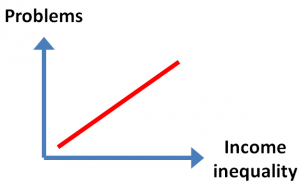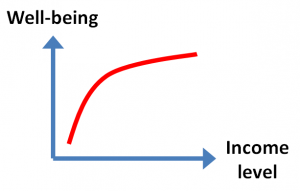We choose our friends. And, I’d like to be able to call anybody my friend, even if they are from a different social rank. Why is this so hard? Richard Wilkinson and Kate Pickett offer up some insight in the The Spirit Level: Why greater equality makes societies stronger.
The big idea
Collecting internationally comparable data on health and social problems from 23 of the wealthiest democracies, Wilkinson and Pickett found that health and social problems are extraordinarily related to income inequality. The list of damages includes: level of trust, mental illness (including drug and alcohol addiction), life expectancy and infant mortality, obesity, children’s educational performance, teenage births, homicides, imprisonment rates, and social mobility.
Their big idea is that what matters in determining mortality and health in a society is less the overall wealth of that society and more how evenly wealth is distributed. The more equally wealth is distributed the better the health of that society…
The cost of societal inequality on relationships
There are 2 opposite ways in which human beings tend to come together; via social status or friendship.
- Social status: Like ranking systems or pecking orders among animals, our status is largely determined by power and coercion. In its most naked and animal form, might is right and the weakest eat last. Respecting others needs is secondary.
- Friendship: Friendship is almost exactly the opposite kind of relationship. It is about reciprocity, mutuality, sharing, social obligations, cooperation and recognition of each other’s needs.
Societal inequities wreak havoc on our fragile psych; be it a rise of anxiety, low self-esteem, social insecurity, issues of pride and shame…
Inequality makes for a powerful social divider. We tend to choose our friends from among our near equals and have little to do with those much richer or much poorer. Yet there is a paradox here, as the measurements of well-being (e.g., Canadian Index of Well-Being) tail off (in long tail fashion) after basic income needs are met. Something like this
The community challenge
In my local community, which is relatively affluent, there are still big social problems; e.g., homelessness. These problems are complex and can only be solved through inclusion and the collaborative efforts of diverse community partners; including those of the lowest (e.g., homeless) and highest social ranks. (e.g., financially endowed).
The income gap is widening. How do we, as community, bridge the two worlds? The authors of Spirit Level offer up a few additional solution options; including tax re-distribution, employee share-ownership, and participative management (harking on social business and the fourth sector). Online communities such as Tamarack take up the challenge nationally.
How do you get the rich and the poor together for meaningful dialogue, and who knows, perhaps even friendship?
If you enjoyed this post, please consider leaving a comment or subscribing to my blog. Thanks, Ben.



[…] More: Social status and friendship = a pair of opposites […]